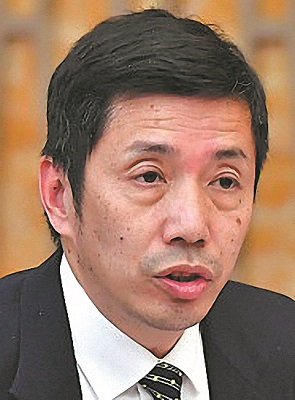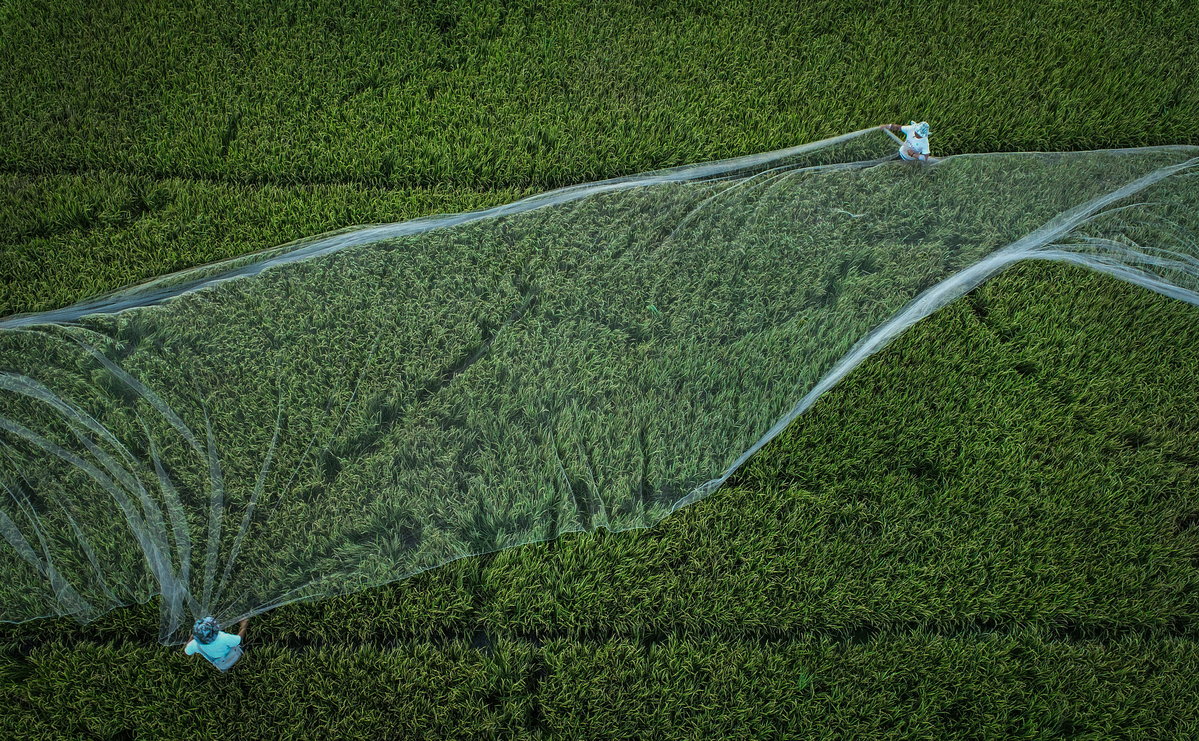Base aims to be Silicon Valley of agriculture
Base aims to be Silicon Valley of agriculture China Daily

![]()
Breeding Base in Sanya Aims to Become “Nanfan Silicon Valley” of Agriculture

Beside Yazhou Bay in Sanya, Hainan province, the Nanfan Scientific and Research Breeding Base stands as a testament to China’s dedication to agricultural innovation.
The base has developed over 70 percent of the country’s new crop varieties and now aspires to leverage technological innovation to contribute to global food security, aiming to become the “Nanfan Silicon Valley” of agriculture.
Chen Fan, a deputy to the National People’s Congress and deputy director of the Yazhou Bay National Laboratory, has been at the forefront of the transformation.
Having dedicated two decades to breeding research at the Nanfan base, he envisions Nanfan Silicon Valley as being akin to Silicon Valley in the United States, emphasizing technological innovation and the integration of capital, industry, and innovation chains.
For Chen, the essence of building Nanfan Silicon Valley lies in it being a true science park rather than an industrial zone. He said it will be a place where research activities align seamlessly with industrial goals, and where industry demands for innovation are met with cutting-edge research, propelling the development of the industry to the next level.
Focus on Sustainable Development Goals (SDGs)
- SDG 2: Zero Hunger
- SDG 9: Industry, Innovation, and Infrastructure
- SDG 12: Responsible Consumption and Production
- SDG 17: Partnerships for the Goals
“What we need most now are the new quality productive forces,” he said. “So that we can use the development of high-tech enterprises to make the transition from traditional to modern agriculture.
“What we are doing now in the Nanfan base is designed breeding, which means that the crop varieties are specifically designed for the environmental conditions in which they will be cultivated in the future. It’s like tailoring clothes, but the design is completed at the genetic level.
“These genetically designed seeds promise greater application scenarios, meeting the demands of industrialized agriculture and enhancing precision in farming practices. It’s hoped that in the future we will produce specific seeds for companies based on what they need; whatever they require, we can create for them.”

Nanfan does not refer to a specific location, but rather a unique breeding process that makes the most of warm winters. Located south of Wuzhi Mountain in Sanya, winter temperatures in the area consistently exceed 16C, making it an optimal environment for seed breeding.
While northern parts of China experience freezing temperatures in winter, the area’s mild climate allows seeds to undergo an additional breeding cycle, which makes the region a natural breeding accelerator and attracts many scientists to do breeding research in winter.
“We have been doing Nanfan since the 1970s, which has significantly contributed to ensuring food security in China,” Chen said. “Looking forward, we hope to develop strategic crop varieties in Nanfan Silicon Valley and contribute to global seed industry development, aiming not only to feed China but also to help feed the world.”
The Nanfan base has already become a hub for international agricultural cooperation. According to official data from the provincial Department of Agriculture and Rural Affairs, Hainan has trained over 5,000 personnel from 99 tropical countries and is developing the China-Cambodia Tropical Eco-Agriculture Cooperation Demonstration Zone in Cambodia to facilitate local agricultural development.
Chen said the base is also working on an international soybean research collaboration platform.
“We are studying the possibilities of cultivating Chinese-developed soybean varieties in Brazil, which can not only help to improve Brazil’s local soybean varieties but also bring more profits to local farmers,” he said.
“Our rice varieties, including Yuan Longping’s high-tech hybrid rice, have made their way to many countries. In the future, we also hope to gradually export our soybeans and corn varieties to more places.”
SDGs, Targets, and Indicators
-
SDG 2: Zero Hunger
- Target 2.3: By 2030, double the agricultural productivity and incomes of small-scale food producers, in particular women, indigenous peoples, family farmers, pastoralists, and fishers, including through secure and equal access to land, other productive resources and inputs, knowledge, financial services, markets, and opportunities for value addition and non-farm employment.
- Indicator 2.3.1: Volume of production per labor unit by classes of farming/pastoral/forestry enterprise size.
-
SDG 9: Industry, Innovation, and Infrastructure
- Target 9.5: Enhance scientific research, upgrade the technological capabilities of industrial sectors in all countries, in particular developing countries, including, by 2030, encouraging innovation and substantially increasing the number of research and development workers per 1 million people and public and private research and development spending.
- Indicator 9.5.1: Research and development expenditure as a proportion of GDP.
The article discusses China’s dedication to agricultural innovation and its aspiration to become the “Nanfan Silicon Valley” of agriculture. This aligns with SDG 2: Zero Hunger, which aims to ensure food security and improve agricultural productivity. The specific target under SDG 2 that can be identified is Target 2.3, which focuses on doubling the agricultural productivity and incomes of small-scale food producers. The article mentions the development of new crop varieties at the Nanfan base, which can contribute to achieving this target. The indicator 2.3.1, which measures the volume of production per labor unit, can be used to measure progress towards this target.
The article also highlights the importance of technological innovation and the integration of capital, industry, and innovation chains in the development of Nanfan Silicon Valley. This relates to SDG 9: Industry, Innovation, and Infrastructure. The specific target under SDG 9 that can be identified is Target 9.5, which focuses on enhancing scientific research and upgrading technological capabilities. The article mentions the emphasis on research activities aligning with industrial goals and meeting industry demands for innovation. The indicator 9.5.1, which measures research and development expenditure as a proportion of GDP, can be used to measure progress towards this target.
SDGs, Targets, and Indicators
| SDGs | Targets | Indicators |
|---|---|---|
| SDG 2: Zero Hunger | Target 2.3: By 2030, double the agricultural productivity and incomes of small-scale food producers, in particular women, indigenous peoples, family farmers, pastoralists, and fishers, including through secure and equal access to land, other productive resources and inputs, knowledge, financial services, markets, and opportunities for value addition and non-farm employment. | Indicator 2.3.1: Volume of production per labor unit by classes of farming/pastoral/forestry enterprise size. |
| SDG 9: Industry, Innovation, and Infrastructure | Target 9.5: Enhance scientific research, upgrade the technological capabilities of industrial sectors in all countries, in particular developing countries, including, by 2030, encouraging innovation and substantially increasing the number of research and development workers per 1 million people and public and private research and development spending. | Indicator 9.5.1: Research and development expenditure as a proportion of GDP. |
Behold! This splendid article springs forth from the wellspring of knowledge, shaped by a wondrous proprietary AI technology that delved into a vast ocean of data, illuminating the path towards the Sustainable Development Goals. Remember that all rights are reserved by SDG Investors LLC, empowering us to champion progress together.
Source: chinadaily.com.cn

Join us, as fellow seekers of change, on a transformative journey at https://sdgtalks.ai/welcome, where you can become a member and actively contribute to shaping a brighter future.







